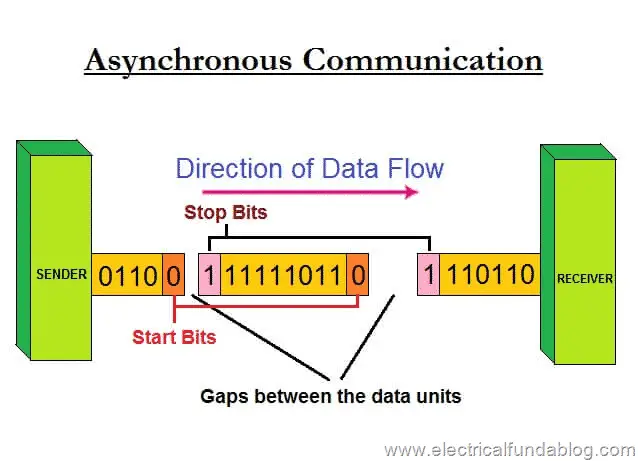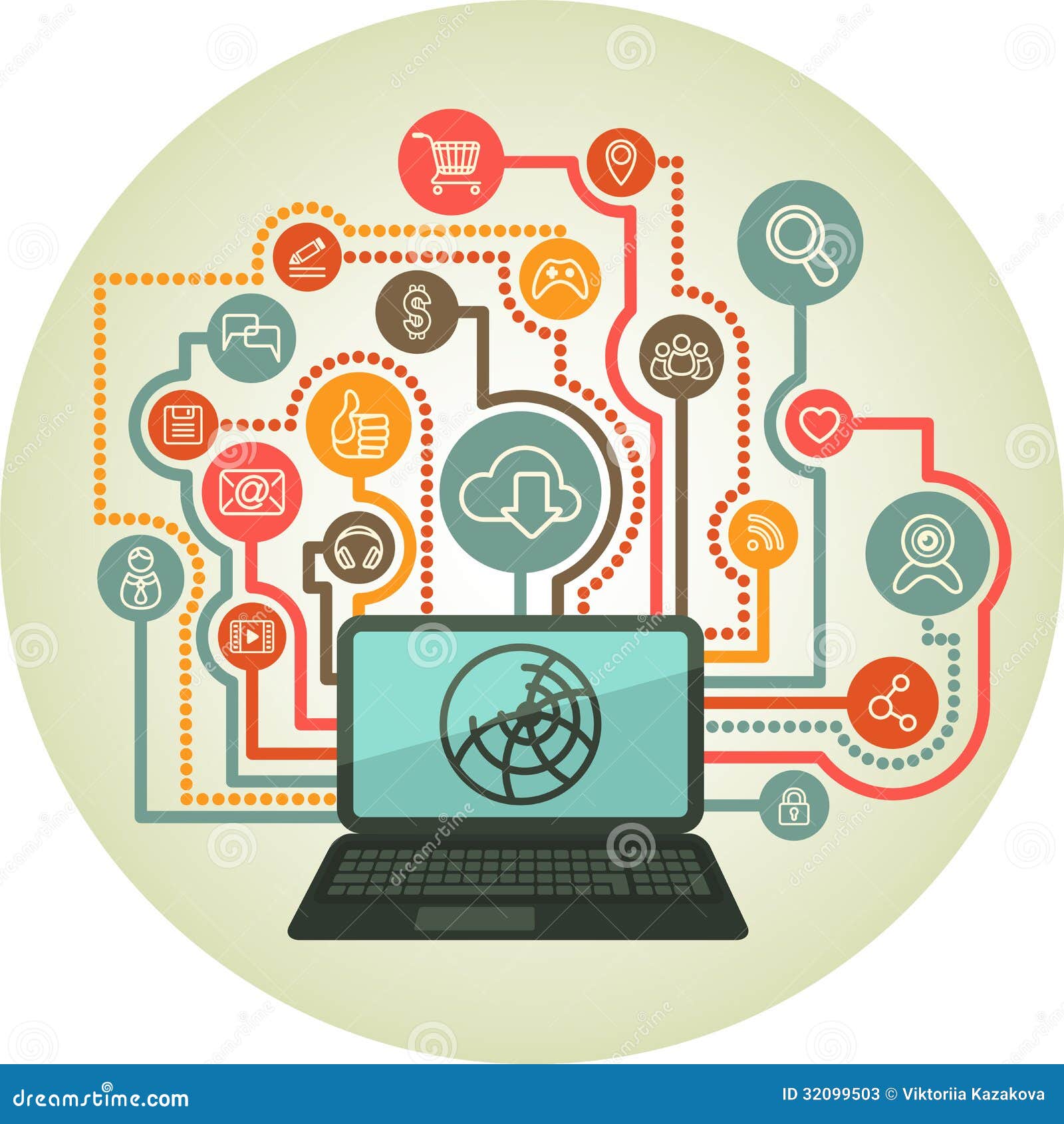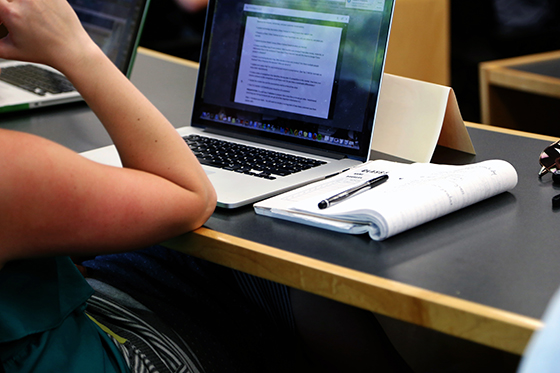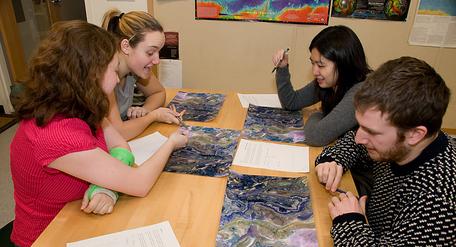LESSON 7: THE PRACTICE OF BLENDED LEARNING

WHAT IS BLENDED LEARNING?
Blended learning is an approach to education that combines online educational materials and opportunities for interaction online with traditional place-based classroom methods. It requires the physical presence of both teacher and student, with some elements of student control over time, place, path, or pace.While students still attend "brick-and-mortar" schools with a teacher present, face-to-face classroom practices are combined with computer-mediated activities regarding content and delivery.Blended learning is also used in professional development and training settings.
WHAT IS ONLINE COMMUNICATION?

Online communication refers to the ways in which individuals as well as computers can communicate with each other over a computer network, such as the Internet.
TWO TYPES OF ONLINE COMMUNICATION
1. ASYNCHRONOUS COMMUNICATION

Is associated with learning anytime and anywhere and does not require a constant bit rate.
Asynchronous communication refers to the exchange of data between two or more parties without the requirement for all the recipients to respond immediately.
2. SYNCHRONOUS COMMUNICATION

Synchronous communication can be defined as real- time communication between two people. Examples include face-to-face or phone communication.
https://www.igi-global.com/dictionary/security-web-servers-web-services/28968
ONLINE INTERACTION

Is defined as the learner's engagement with the course content, other learners, the instructor' and the technology.
Online interaction can be both rewarding and challenging. Students often have preferences for online or offline learning interactions, and they may select one learning environment over the other for varying reasons.
https://www.sciencedirect.com/topics/social-sciences/online-interaction

Takes place when online teacher for example conducts an open discussion with the students using the chat room, social media technologies and other tools for online conferences.
2.STUDENT TO CONTENT INTERACTION

Students interact with the course content through engaging in such learning activities as reading, watching videos, using software programs, participating in simulations, exploring resources, and working on course assignments.
https://www.igi-global.com/dictionary/a-review-of-literature-and-a-model-for-scaffolding-asynchronous-student-student-interaction-in-online-discussion-forums/58423
3. STUDENT TO STUDENT INTERACTION

Student-to-student interaction is a vital part of any course experience. In a classroom setting, this interaction happens naturally, as students listen to each other’s comments, ask each other questions, and build rapport through frequent contact. Instructors can also foster student-to-student interaction in an online setting, but it may require building formal and informal interaction opportunities in your course design.
https://www.rit.edu/academicaffairs/tls/course-design/teaching-elements/student-to-student

The students rotate on a fixed schedule or at the teacher's discretion between learning modalities, at least one of which is online learning.

The Station Rotation Model does exactly what the name suggests–students rotate through learning stations either on a fixed schedule or at the teacher’s discretion. At least one of the stations must be an online learning station for this to be considered a blended learning model.
https://www.eduexcellence.org/blog/396/station-rotation-differentiating-instructions-to-reach-all-students
The students experience the rotation within a contained classroom or group of classrooms.
b. LAB ROTATION MODEL

The Lab Rotation model, like a Station Rotation, allows students to rotate through stations on a fixed schedule. However, in this case, online learning occurs in a dedicated computer lab. This model allows for flexible scheduling arrangements with teachers and other paraprofessionals, and enables schools to make use of existing computer labs.
https://www.blendedlearning.org/models/
c. FLIPPED CLASSROOM

The Flipped Classroom model flips the traditional relationship between class time and homework. Students learn at home via online coursework and lectures, and teachers use class time for teacher-guided practice or projects. This model enables teachers to use class time for more than delivering traditional lectures.
https://www.blendedlearning.org/models/
d.INDIVIDUAL ROTATION MODEL

The Individual Rotation model allows students to rotate through stations, but on individual schedules set by a teacher or software algorithm. Unlike other rotation models, students do not necessarily rotate to every station; they rotate only to the activities scheduled on their playlists.
https://www.blendedlearning.org/models/
2 .FLEX MODEL

In the flex model, online instruction is the primary mode of accessing content and materials, with additional support from a teacher face-to-face. Teachers share learning activities with students who access them at their own pace, and then teachers use data to intervene in real-time. This model is dependent on self-directed learning and allows for a fluid schedule that is more flexible than other models as online learning makes up the bulk of a student’s direct instruction.
https://blog.kiddom.co/individual-rotation-and-flex/
3. A LA CARTE MODEL

A La Carte model (formerly Self-Blend model)—a program in which students take one or more courses entirely online with an online teacher of record and at the same time continue to have brick-and-mortar educational experiences. Students may take the online courses either on the brick-and-mortar campus or off-site.
https://sites.google.com/a/salem.k12.va.us/blendedlearning/models/a-la-carte-model
4 ENRICHED VIRTUAL MODEL

The Enriched Virtual model allows students to spend most of their time completing coursework online remotely, supplemented by required in-person learning sessions with their teacher. While online learning is fundamental to the Enriched Virtual model, it differs from full-time virtual schools because face-to-face learning is a required component of the coursework, not optional as it is in full-time virtual schools. In fact, many full-time virtual schools have transitioned their programs to an Enriched Virtual model to provide students with the important experiences of a school campus.
https://www.raiseyourhandtexas.org/blended-learning/understanding-different-models-blended-learning/

Synchronous communication can be defined as real- time communication between two people. Examples include face-to-face or phone communication.
https://www.igi-global.com/dictionary/security-web-servers-web-services/28968
ONLINE INTERACTION
Is defined as the learner's engagement with the course content, other learners, the instructor' and the technology.
Online interaction can be both rewarding and challenging. Students often have preferences for online or offline learning interactions, and they may select one learning environment over the other for varying reasons.
https://www.sciencedirect.com/topics/social-sciences/online-interaction
THREE FORMS OF ONLINE INTERACTION
1. TEACHER TO STUDENT INTERACTION

Takes place when online teacher for example conducts an open discussion with the students using the chat room, social media technologies and other tools for online conferences.
2.STUDENT TO CONTENT INTERACTION

Students interact with the course content through engaging in such learning activities as reading, watching videos, using software programs, participating in simulations, exploring resources, and working on course assignments.
https://www.igi-global.com/dictionary/a-review-of-literature-and-a-model-for-scaffolding-asynchronous-student-student-interaction-in-online-discussion-forums/58423
3. STUDENT TO STUDENT INTERACTION

Student-to-student interaction is a vital part of any course experience. In a classroom setting, this interaction happens naturally, as students listen to each other’s comments, ask each other questions, and build rapport through frequent contact. Instructors can also foster student-to-student interaction in an online setting, but it may require building formal and informal interaction opportunities in your course design.
https://www.rit.edu/academicaffairs/tls/course-design/teaching-elements/student-to-student
MODELS OF BLENDED LEARNING
1. ROTATION MODEL

The students rotate on a fixed schedule or at the teacher's discretion between learning modalities, at least one of which is online learning.
SUB-MODELS OF STATION ROTATION MODEL
a. STATION ROTATION

The Station Rotation Model does exactly what the name suggests–students rotate through learning stations either on a fixed schedule or at the teacher’s discretion. At least one of the stations must be an online learning station for this to be considered a blended learning model.
https://www.eduexcellence.org/blog/396/station-rotation-differentiating-instructions-to-reach-all-students
The students experience the rotation within a contained classroom or group of classrooms.
b. LAB ROTATION MODEL

The Lab Rotation model, like a Station Rotation, allows students to rotate through stations on a fixed schedule. However, in this case, online learning occurs in a dedicated computer lab. This model allows for flexible scheduling arrangements with teachers and other paraprofessionals, and enables schools to make use of existing computer labs.
https://www.blendedlearning.org/models/
c. FLIPPED CLASSROOM

The Flipped Classroom model flips the traditional relationship between class time and homework. Students learn at home via online coursework and lectures, and teachers use class time for teacher-guided practice or projects. This model enables teachers to use class time for more than delivering traditional lectures.
https://www.blendedlearning.org/models/
d.INDIVIDUAL ROTATION MODEL

The Individual Rotation model allows students to rotate through stations, but on individual schedules set by a teacher or software algorithm. Unlike other rotation models, students do not necessarily rotate to every station; they rotate only to the activities scheduled on their playlists.
https://www.blendedlearning.org/models/
2 .FLEX MODEL

In the flex model, online instruction is the primary mode of accessing content and materials, with additional support from a teacher face-to-face. Teachers share learning activities with students who access them at their own pace, and then teachers use data to intervene in real-time. This model is dependent on self-directed learning and allows for a fluid schedule that is more flexible than other models as online learning makes up the bulk of a student’s direct instruction.
https://blog.kiddom.co/individual-rotation-and-flex/
3. A LA CARTE MODEL

A La Carte model (formerly Self-Blend model)—a program in which students take one or more courses entirely online with an online teacher of record and at the same time continue to have brick-and-mortar educational experiences. Students may take the online courses either on the brick-and-mortar campus or off-site.
https://sites.google.com/a/salem.k12.va.us/blendedlearning/models/a-la-carte-model
4 ENRICHED VIRTUAL MODEL
The Enriched Virtual model allows students to spend most of their time completing coursework online remotely, supplemented by required in-person learning sessions with their teacher. While online learning is fundamental to the Enriched Virtual model, it differs from full-time virtual schools because face-to-face learning is a required component of the coursework, not optional as it is in full-time virtual schools. In fact, many full-time virtual schools have transitioned their programs to an Enriched Virtual model to provide students with the important experiences of a school campus.
https://www.raiseyourhandtexas.org/blended-learning/understanding-different-models-blended-learning/
Mga Komento
Mag-post ng isang Komento